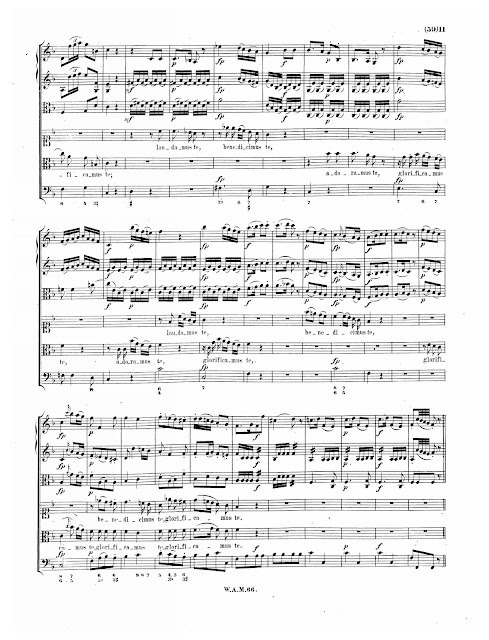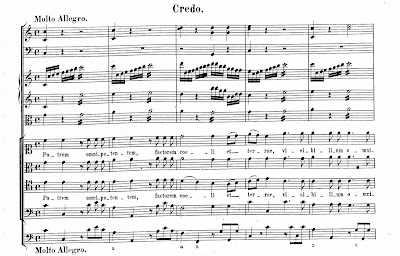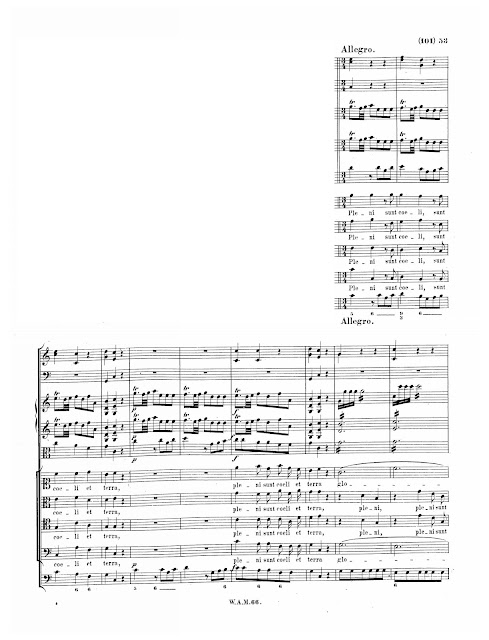CCCLVII. MOZART, Wolfgang Amadeus (1756-1791)
The same year he wrote the Missa Brevis in D Minor, K. 65 (see Post CCLXIV). As one of my astute readers pointed out, he was 13 -- not 12, as I wrote there.
Surely then, at that age when we call a kid a teenager, he was more than capable of writing a long-form Mass, as well!
The occasion was provided by the Mozarts' friend and landlord, Cajetan Hagenauer -- who was ordained as Pater Dominicus at St. Peter's Abbey.
**
Kyrie
and a reduction to show the beautiful part-writing:
There follows a 3/4 Allegro, the violins in rocketing ascending arpeggios in thirds, with trumpet, timpani and continuo accompaniment.
The chorus begins with a clipped statement of Kyrie, then it becomes more complex, before he gives the soprano and alto soloists the part in dotted-half notes:
He then changes the combination to alto & tenor, before the movement's conclusion:
Gloria
Beginning simply, note how the kid uses imitative stretto on the bottom of the page:
The Laudamus te in F major, 2/4 featuring a soprano/alto duet:
Domine Deus in G Major, 3/4, tenor solo; the violins accompany with a syncopated triplet rhythm:
Qui tollis peccata mundi, G Minor. Stately, full chorus, accompanied by falling arpeggios in the violins:
Quoniam tu in F Major, 3/4, soprano solo; check out the long melisma on the word sanctus:
The Gloria closes with Cum Sancto Spiritu, C Major -- a clever fugue:
Credo
Full-throated chorus:
Et incarnatus est, Adagio, F Major, all four soloists, featuring a nice deceptive cadence:
Crucifixus; Adagio, C Minor. Intense. Check out the writing in this outline:
Et resurrexit. Molto allegro, C Major. Check out this beautiful progression in C Minor moving to the dominant, on the words vivos et mortuos (living and dead) ...
|| c: i // vii°/vi⁶ // iv⁶ / Ger+⁶ // V ||
Et in Spiritum Sanctum Dominum, Andante, G Major, 3/4, soprano solo:
Et in unam sanctam, Moderato, C Major:




































No comments:
Post a Comment